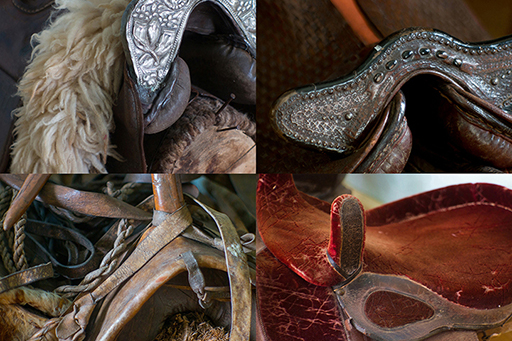
he discovery of gold in Minas Gerais defined the destiny of Southern Brazil. For security, and to prevent possible embezzlement, the Portuguese Crown prohibited supplying the mines from the North; in 1704 it was decreed that the whole supply of cattle for meat and mules and hinnies for transport be gotten in the captaincies of the South. There was a great quantity of those animals in the fields of the Continente de São Pedro, which justified the opening of a land route in 1730. The route was called Caminho (or Estrada) Real do Viamão. It ran from the South to Sorocaba, São Paulo, where there was a big annual cattle market. In the countryside between both ends of the route, great properties were established for enclosing the land to hold and protect hundreds of animals, give support and rest to the travelers on the 2000 kilometer route through lands populated by natives and jaguars, and where anything could happen.
The Paraná countryside was ideal for wintering, when the animals stopped for three or four moths to rest and fatten before being driven to the Sorocaba market.Very many of the landowners and cattle-raisers on the Paranaense plateau began to rent their pastures and even went into the cattle business, becoming themselves tropeiros.
The tropeiro proprerly speaking was the head of the tropa, the man in charge of business. He could have one or more associates, and, on journeys, in case of his absence, a foreman would be hired to run things. Workers carried out innumerable tasks; they were cooks, herders, and drivers. In the places where the tropas stopped overnight, there arose “pousos”, resting places a day’s travel apart.
In those resting places, there was organized support for the tropeiros; everything from the production of foodstuff to services such as saddlery were practiced there. The resting places gradually became villages, and then towns. These towns were the origins of the current-day municipalities of Rio Negro, Campo do Tenente, Lapa, Balsa Nova, São Luiz do Purunã, Palmeira, Ponta Grossa, Carambeí, Castro, Piraí do Sul, Jaguariaíva, and Sengés. The growth of economic activity also promoted continual occupation of the territory. In Campos Gerais, a society marked by rural traditions and customs took shape.
The structure which now houses the Museu do Tropeiro, in Castro, was built in the 18th century by the Carneiro Lobo family. In 1975, the property was purchased by the municipal government and its restoration was overseen by Coordenação do Patrimônio Cultural do Estado do Paraná.
click on picture
to enlarge